Analysis of the Fairness Cream Market in India: HUL Strategies
VerifiedAdded on 2022/10/15
|23
|6039
|239
Report
AI Summary
This report provides a comprehensive analysis of the fairness cream market in India, with a specific focus on Hindustan Unilever Limited (HUL). It begins with an executive summary and table of contents, followed by an introduction that highlights the growth of the cosmetics industry and the obsession with fairness in India. The report outlines marketing objectives, product analysis, and a detailed examination of the target market, including demographic and psychographic factors. A key component is the application of Porter's Five Forces to assess industry competition, including threats of substitutes, bargaining power of buyers and suppliers, and the competitive rivalry. The marketing mix (4Ps) – product, price, place, and promotion – is analyzed, along with marketing metrics and a SWOT analysis of the fairness cream industry and HUL. The report concludes with recommendations, including the Ansoff matrix and DRIP model, to help HUL achieve its marketing objectives and gain a competitive edge in the expanding market. This report is a valuable resource for students studying strategic marketing management.
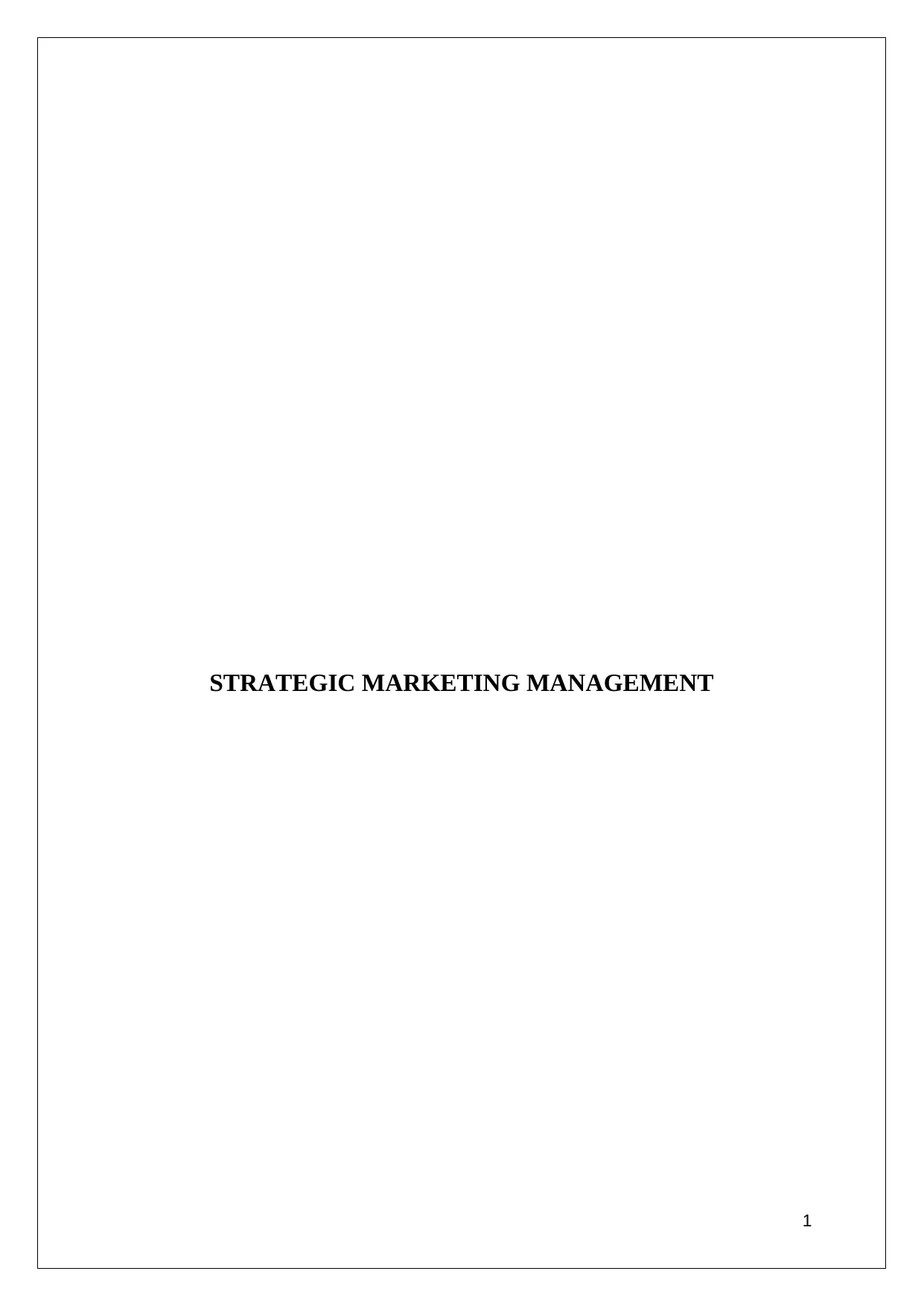
STRATEGIC MARKETING MANAGEMENT
1
1
Paraphrase This Document
Need a fresh take? Get an instant paraphrase of this document with our AI Paraphraser
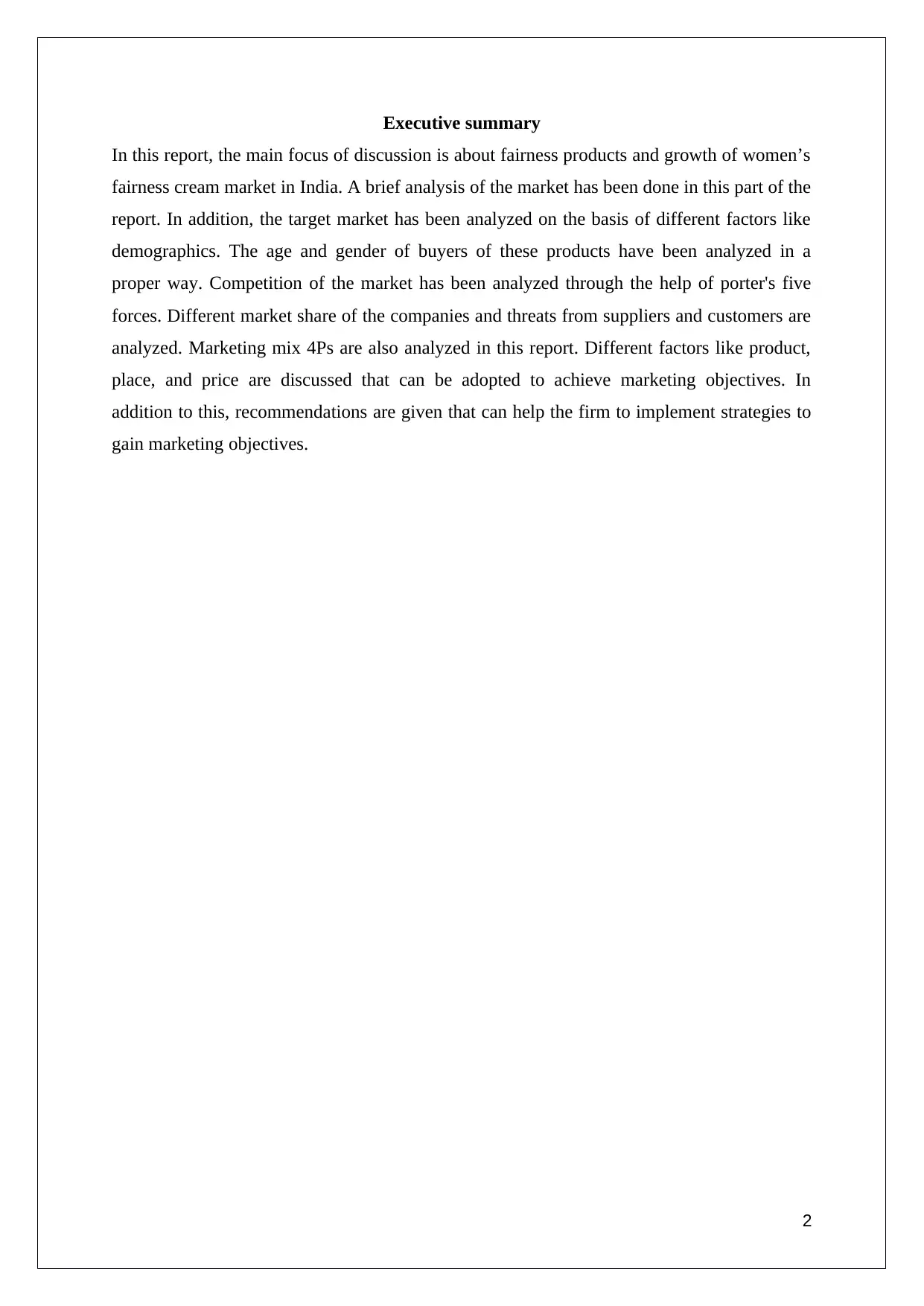
Executive summary
In this report, the main focus of discussion is about fairness products and growth of women’s
fairness cream market in India. A brief analysis of the market has been done in this part of the
report. In addition, the target market has been analyzed on the basis of different factors like
demographics. The age and gender of buyers of these products have been analyzed in a
proper way. Competition of the market has been analyzed through the help of porter's five
forces. Different market share of the companies and threats from suppliers and customers are
analyzed. Marketing mix 4Ps are also analyzed in this report. Different factors like product,
place, and price are discussed that can be adopted to achieve marketing objectives. In
addition to this, recommendations are given that can help the firm to implement strategies to
gain marketing objectives.
2
In this report, the main focus of discussion is about fairness products and growth of women’s
fairness cream market in India. A brief analysis of the market has been done in this part of the
report. In addition, the target market has been analyzed on the basis of different factors like
demographics. The age and gender of buyers of these products have been analyzed in a
proper way. Competition of the market has been analyzed through the help of porter's five
forces. Different market share of the companies and threats from suppliers and customers are
analyzed. Marketing mix 4Ps are also analyzed in this report. Different factors like product,
place, and price are discussed that can be adopted to achieve marketing objectives. In
addition to this, recommendations are given that can help the firm to implement strategies to
gain marketing objectives.
2
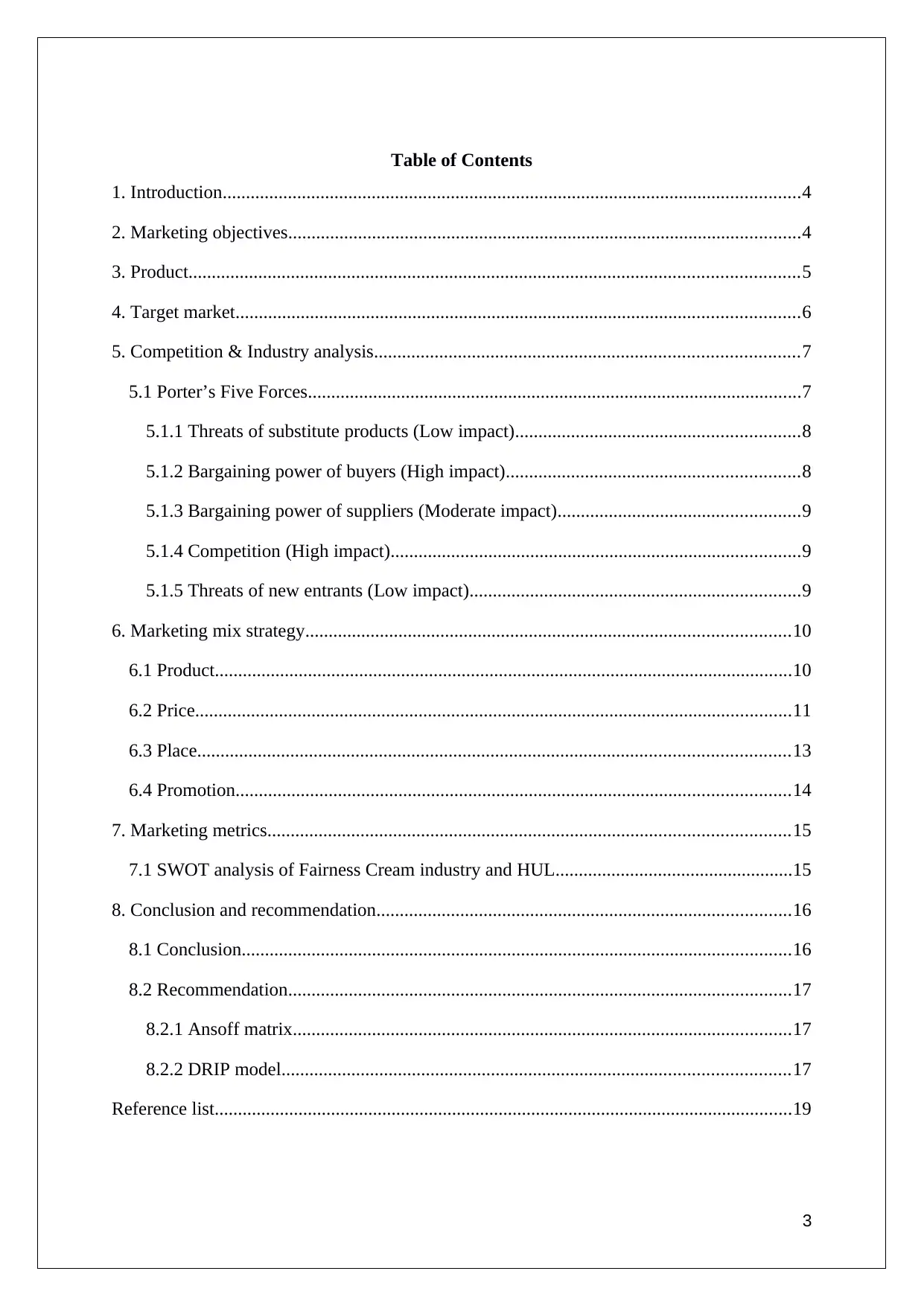
Table of Contents
1. Introduction............................................................................................................................4
2. Marketing objectives..............................................................................................................4
3. Product...................................................................................................................................5
4. Target market.........................................................................................................................6
5. Competition & Industry analysis...........................................................................................7
5.1 Porter’s Five Forces..........................................................................................................7
5.1.1 Threats of substitute products (Low impact).............................................................8
5.1.2 Bargaining power of buyers (High impact)...............................................................8
5.1.3 Bargaining power of suppliers (Moderate impact)....................................................9
5.1.4 Competition (High impact)........................................................................................9
5.1.5 Threats of new entrants (Low impact).......................................................................9
6. Marketing mix strategy........................................................................................................10
6.1 Product............................................................................................................................10
6.2 Price................................................................................................................................11
6.3 Place...............................................................................................................................13
6.4 Promotion.......................................................................................................................14
7. Marketing metrics................................................................................................................15
7.1 SWOT analysis of Fairness Cream industry and HUL...................................................15
8. Conclusion and recommendation.........................................................................................16
8.1 Conclusion......................................................................................................................16
8.2 Recommendation............................................................................................................17
8.2.1 Ansoff matrix...........................................................................................................17
8.2.2 DRIP model.............................................................................................................17
Reference list............................................................................................................................19
3
1. Introduction............................................................................................................................4
2. Marketing objectives..............................................................................................................4
3. Product...................................................................................................................................5
4. Target market.........................................................................................................................6
5. Competition & Industry analysis...........................................................................................7
5.1 Porter’s Five Forces..........................................................................................................7
5.1.1 Threats of substitute products (Low impact).............................................................8
5.1.2 Bargaining power of buyers (High impact)...............................................................8
5.1.3 Bargaining power of suppliers (Moderate impact)....................................................9
5.1.4 Competition (High impact)........................................................................................9
5.1.5 Threats of new entrants (Low impact).......................................................................9
6. Marketing mix strategy........................................................................................................10
6.1 Product............................................................................................................................10
6.2 Price................................................................................................................................11
6.3 Place...............................................................................................................................13
6.4 Promotion.......................................................................................................................14
7. Marketing metrics................................................................................................................15
7.1 SWOT analysis of Fairness Cream industry and HUL...................................................15
8. Conclusion and recommendation.........................................................................................16
8.1 Conclusion......................................................................................................................16
8.2 Recommendation............................................................................................................17
8.2.1 Ansoff matrix...........................................................................................................17
8.2.2 DRIP model.............................................................................................................17
Reference list............................................................................................................................19
3
⊘ This is a preview!⊘
Do you want full access?
Subscribe today to unlock all pages.

Trusted by 1+ million students worldwide
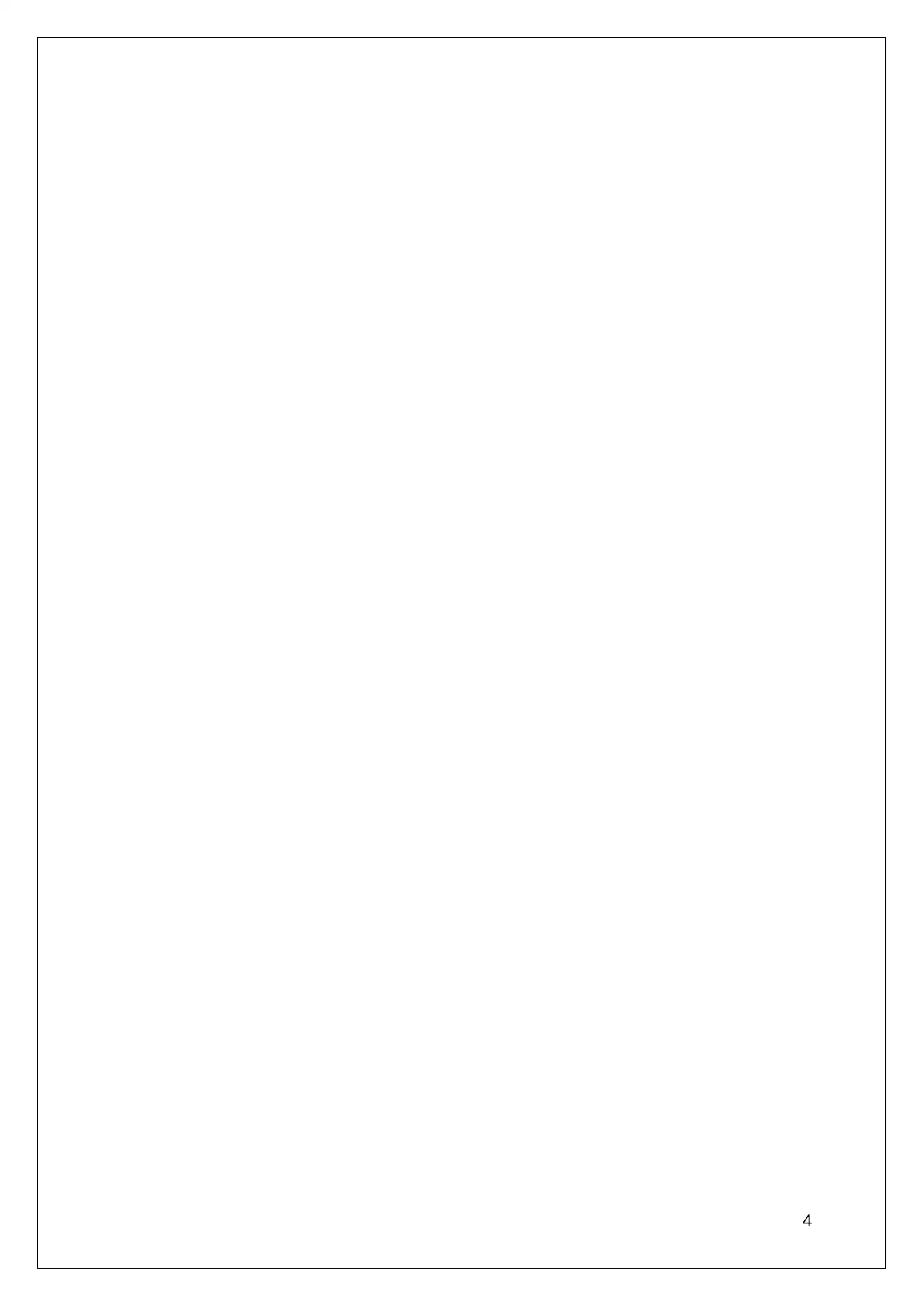
4
Paraphrase This Document
Need a fresh take? Get an instant paraphrase of this document with our AI Paraphraser
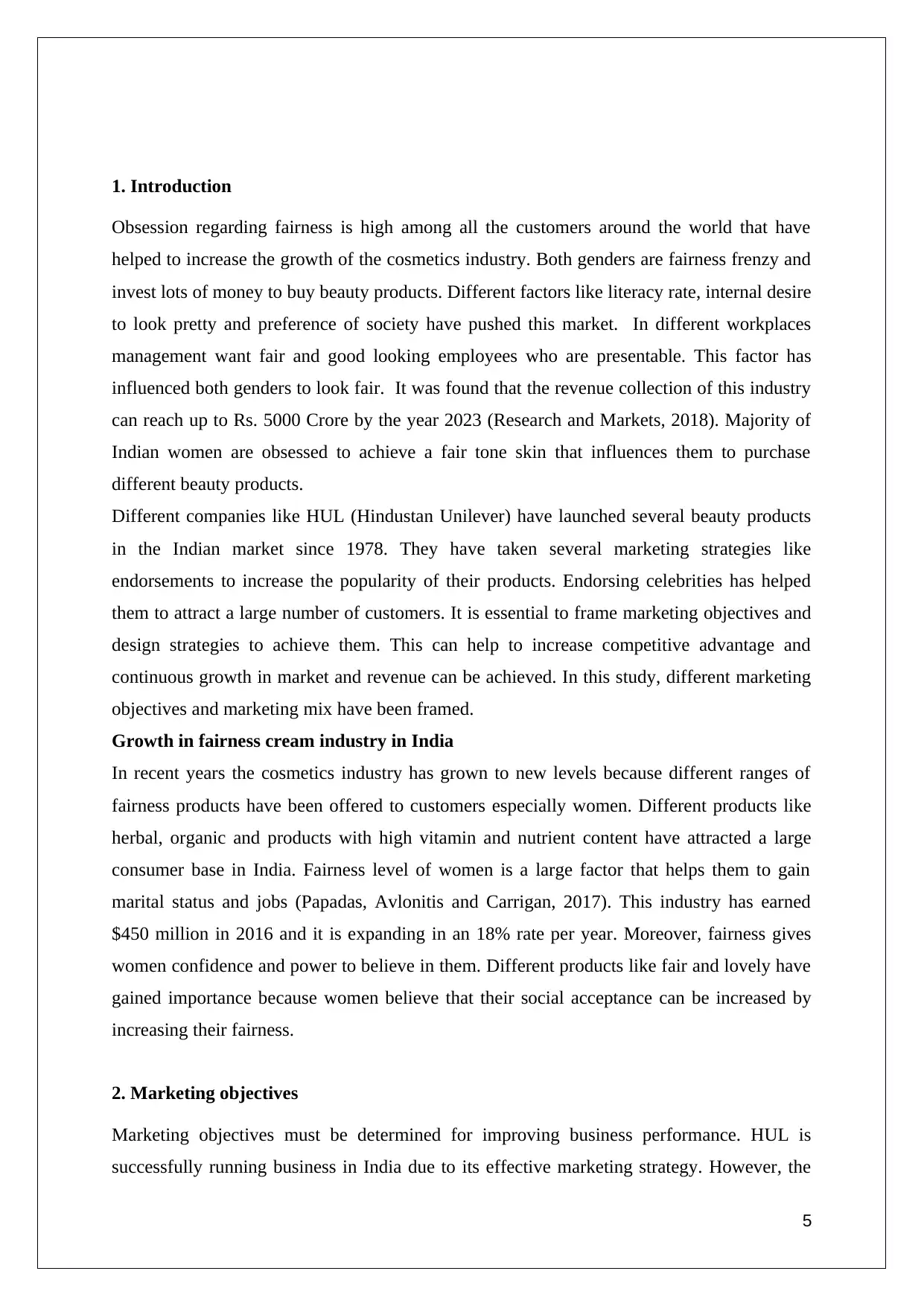
1. Introduction
Obsession regarding fairness is high among all the customers around the world that have
helped to increase the growth of the cosmetics industry. Both genders are fairness frenzy and
invest lots of money to buy beauty products. Different factors like literacy rate, internal desire
to look pretty and preference of society have pushed this market. In different workplaces
management want fair and good looking employees who are presentable. This factor has
influenced both genders to look fair. It was found that the revenue collection of this industry
can reach up to Rs. 5000 Crore by the year 2023 (Research and Markets, 2018). Majority of
Indian women are obsessed to achieve a fair tone skin that influences them to purchase
different beauty products.
Different companies like HUL (Hindustan Unilever) have launched several beauty products
in the Indian market since 1978. They have taken several marketing strategies like
endorsements to increase the popularity of their products. Endorsing celebrities has helped
them to attract a large number of customers. It is essential to frame marketing objectives and
design strategies to achieve them. This can help to increase competitive advantage and
continuous growth in market and revenue can be achieved. In this study, different marketing
objectives and marketing mix have been framed.
Growth in fairness cream industry in India
In recent years the cosmetics industry has grown to new levels because different ranges of
fairness products have been offered to customers especially women. Different products like
herbal, organic and products with high vitamin and nutrient content have attracted a large
consumer base in India. Fairness level of women is a large factor that helps them to gain
marital status and jobs (Papadas, Avlonitis and Carrigan, 2017). This industry has earned
$450 million in 2016 and it is expanding in an 18% rate per year. Moreover, fairness gives
women confidence and power to believe in them. Different products like fair and lovely have
gained importance because women believe that their social acceptance can be increased by
increasing their fairness.
2. Marketing objectives
Marketing objectives must be determined for improving business performance. HUL is
successfully running business in India due to its effective marketing strategy. However, the
5
Obsession regarding fairness is high among all the customers around the world that have
helped to increase the growth of the cosmetics industry. Both genders are fairness frenzy and
invest lots of money to buy beauty products. Different factors like literacy rate, internal desire
to look pretty and preference of society have pushed this market. In different workplaces
management want fair and good looking employees who are presentable. This factor has
influenced both genders to look fair. It was found that the revenue collection of this industry
can reach up to Rs. 5000 Crore by the year 2023 (Research and Markets, 2018). Majority of
Indian women are obsessed to achieve a fair tone skin that influences them to purchase
different beauty products.
Different companies like HUL (Hindustan Unilever) have launched several beauty products
in the Indian market since 1978. They have taken several marketing strategies like
endorsements to increase the popularity of their products. Endorsing celebrities has helped
them to attract a large number of customers. It is essential to frame marketing objectives and
design strategies to achieve them. This can help to increase competitive advantage and
continuous growth in market and revenue can be achieved. In this study, different marketing
objectives and marketing mix have been framed.
Growth in fairness cream industry in India
In recent years the cosmetics industry has grown to new levels because different ranges of
fairness products have been offered to customers especially women. Different products like
herbal, organic and products with high vitamin and nutrient content have attracted a large
consumer base in India. Fairness level of women is a large factor that helps them to gain
marital status and jobs (Papadas, Avlonitis and Carrigan, 2017). This industry has earned
$450 million in 2016 and it is expanding in an 18% rate per year. Moreover, fairness gives
women confidence and power to believe in them. Different products like fair and lovely have
gained importance because women believe that their social acceptance can be increased by
increasing their fairness.
2. Marketing objectives
Marketing objectives must be determined for improving business performance. HUL is
successfully running business in India due to its effective marketing strategy. However, the
5
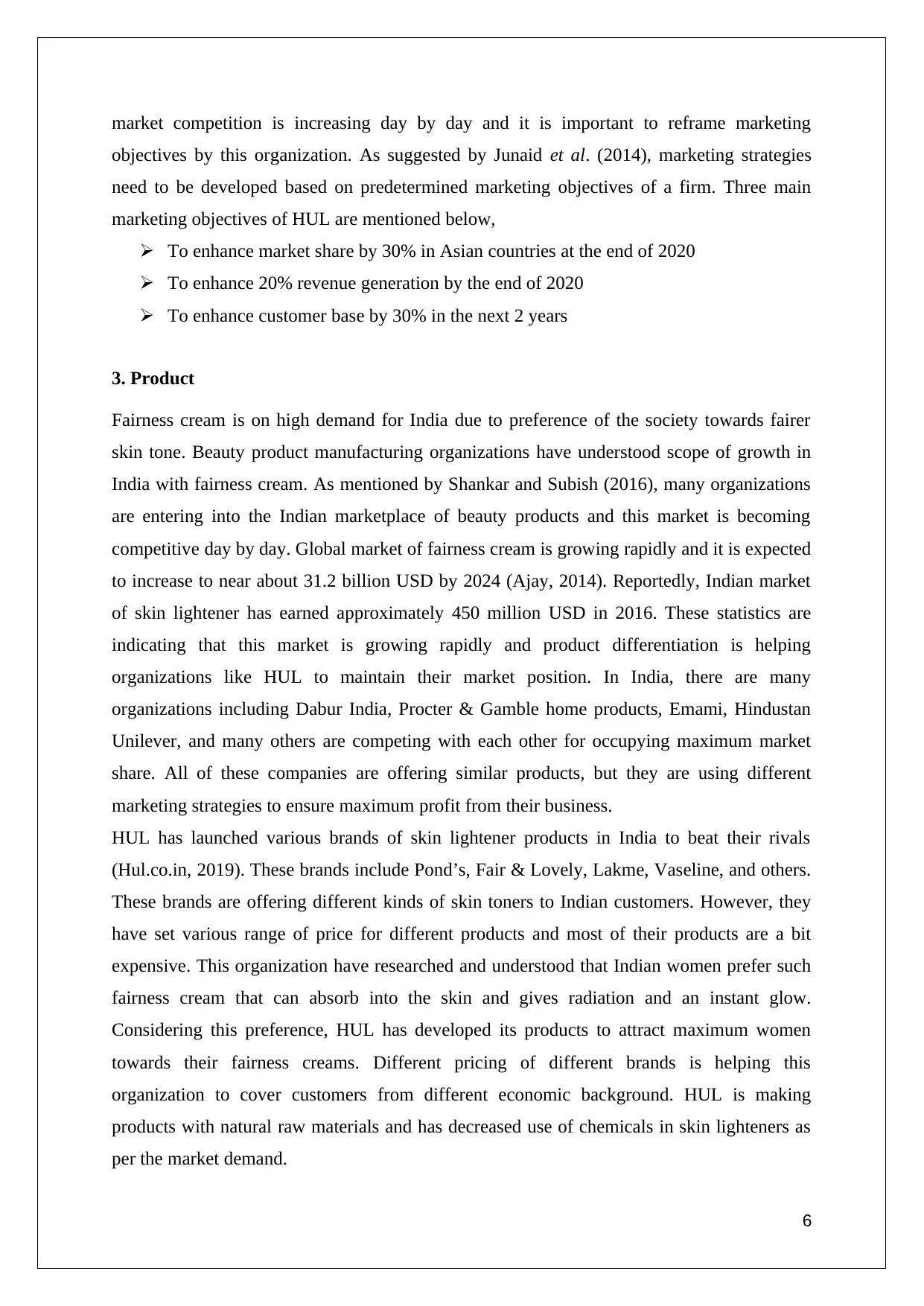
market competition is increasing day by day and it is important to reframe marketing
objectives by this organization. As suggested by Junaid et al. (2014), marketing strategies
need to be developed based on predetermined marketing objectives of a firm. Three main
marketing objectives of HUL are mentioned below,
To enhance market share by 30% in Asian countries at the end of 2020
To enhance 20% revenue generation by the end of 2020
To enhance customer base by 30% in the next 2 years
3. Product
Fairness cream is on high demand for India due to preference of the society towards fairer
skin tone. Beauty product manufacturing organizations have understood scope of growth in
India with fairness cream. As mentioned by Shankar and Subish (2016), many organizations
are entering into the Indian marketplace of beauty products and this market is becoming
competitive day by day. Global market of fairness cream is growing rapidly and it is expected
to increase to near about 31.2 billion USD by 2024 (Ajay, 2014). Reportedly, Indian market
of skin lightener has earned approximately 450 million USD in 2016. These statistics are
indicating that this market is growing rapidly and product differentiation is helping
organizations like HUL to maintain their market position. In India, there are many
organizations including Dabur India, Procter & Gamble home products, Emami, Hindustan
Unilever, and many others are competing with each other for occupying maximum market
share. All of these companies are offering similar products, but they are using different
marketing strategies to ensure maximum profit from their business.
HUL has launched various brands of skin lightener products in India to beat their rivals
(Hul.co.in, 2019). These brands include Pond’s, Fair & Lovely, Lakme, Vaseline, and others.
These brands are offering different kinds of skin toners to Indian customers. However, they
have set various range of price for different products and most of their products are a bit
expensive. This organization have researched and understood that Indian women prefer such
fairness cream that can absorb into the skin and gives radiation and an instant glow.
Considering this preference, HUL has developed its products to attract maximum women
towards their fairness creams. Different pricing of different brands is helping this
organization to cover customers from different economic background. HUL is making
products with natural raw materials and has decreased use of chemicals in skin lighteners as
per the market demand.
6
objectives by this organization. As suggested by Junaid et al. (2014), marketing strategies
need to be developed based on predetermined marketing objectives of a firm. Three main
marketing objectives of HUL are mentioned below,
To enhance market share by 30% in Asian countries at the end of 2020
To enhance 20% revenue generation by the end of 2020
To enhance customer base by 30% in the next 2 years
3. Product
Fairness cream is on high demand for India due to preference of the society towards fairer
skin tone. Beauty product manufacturing organizations have understood scope of growth in
India with fairness cream. As mentioned by Shankar and Subish (2016), many organizations
are entering into the Indian marketplace of beauty products and this market is becoming
competitive day by day. Global market of fairness cream is growing rapidly and it is expected
to increase to near about 31.2 billion USD by 2024 (Ajay, 2014). Reportedly, Indian market
of skin lightener has earned approximately 450 million USD in 2016. These statistics are
indicating that this market is growing rapidly and product differentiation is helping
organizations like HUL to maintain their market position. In India, there are many
organizations including Dabur India, Procter & Gamble home products, Emami, Hindustan
Unilever, and many others are competing with each other for occupying maximum market
share. All of these companies are offering similar products, but they are using different
marketing strategies to ensure maximum profit from their business.
HUL has launched various brands of skin lightener products in India to beat their rivals
(Hul.co.in, 2019). These brands include Pond’s, Fair & Lovely, Lakme, Vaseline, and others.
These brands are offering different kinds of skin toners to Indian customers. However, they
have set various range of price for different products and most of their products are a bit
expensive. This organization have researched and understood that Indian women prefer such
fairness cream that can absorb into the skin and gives radiation and an instant glow.
Considering this preference, HUL has developed its products to attract maximum women
towards their fairness creams. Different pricing of different brands is helping this
organization to cover customers from different economic background. HUL is making
products with natural raw materials and has decreased use of chemicals in skin lighteners as
per the market demand.
6
⊘ This is a preview!⊘
Do you want full access?
Subscribe today to unlock all pages.

Trusted by 1+ million students worldwide
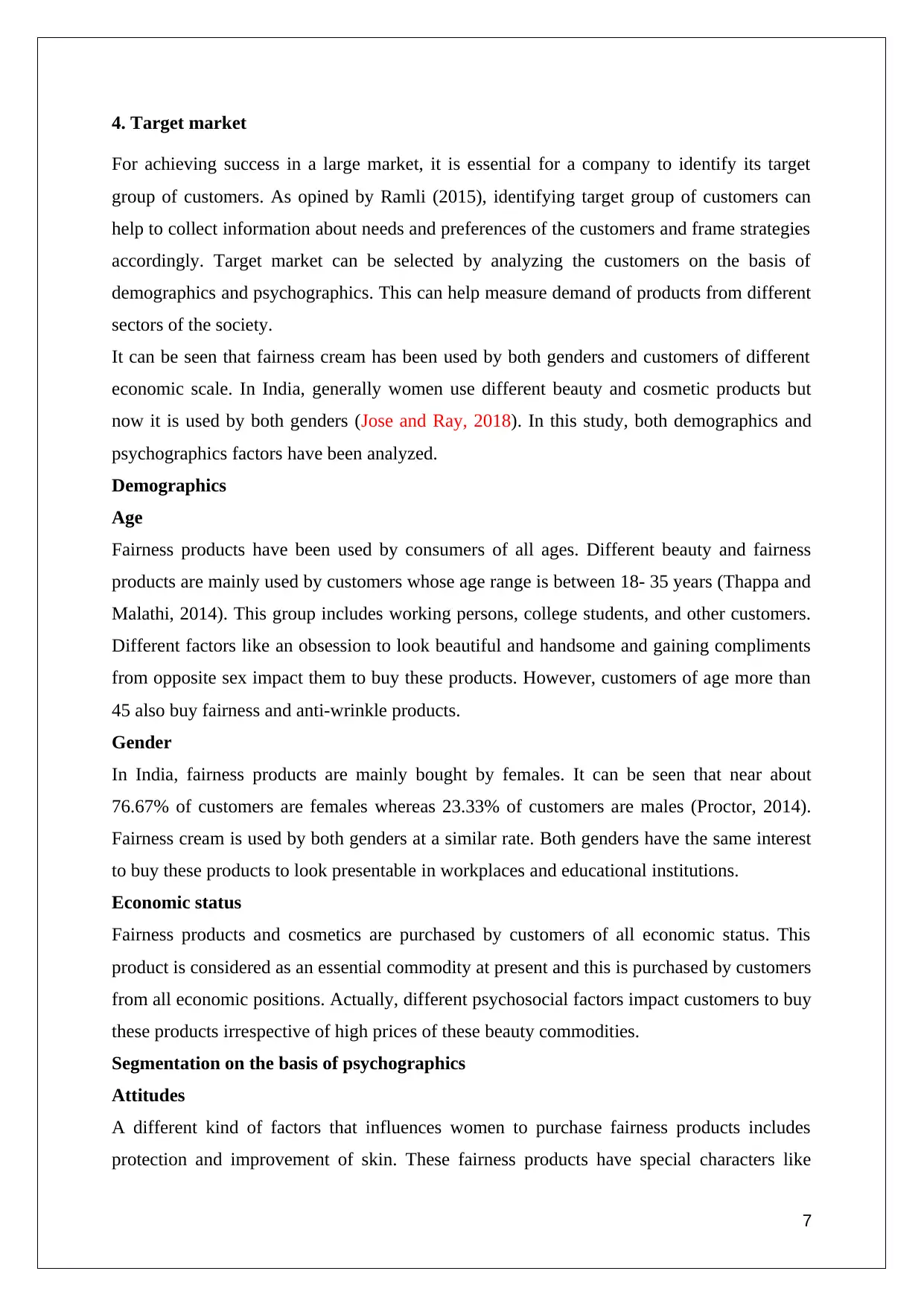
4. Target market
For achieving success in a large market, it is essential for a company to identify its target
group of customers. As opined by Ramli (2015), identifying target group of customers can
help to collect information about needs and preferences of the customers and frame strategies
accordingly. Target market can be selected by analyzing the customers on the basis of
demographics and psychographics. This can help measure demand of products from different
sectors of the society.
It can be seen that fairness cream has been used by both genders and customers of different
economic scale. In India, generally women use different beauty and cosmetic products but
now it is used by both genders (Jose and Ray, 2018). In this study, both demographics and
psychographics factors have been analyzed.
Demographics
Age
Fairness products have been used by consumers of all ages. Different beauty and fairness
products are mainly used by customers whose age range is between 18- 35 years (Thappa and
Malathi, 2014). This group includes working persons, college students, and other customers.
Different factors like an obsession to look beautiful and handsome and gaining compliments
from opposite sex impact them to buy these products. However, customers of age more than
45 also buy fairness and anti-wrinkle products.
Gender
In India, fairness products are mainly bought by females. It can be seen that near about
76.67% of customers are females whereas 23.33% of customers are males (Proctor, 2014).
Fairness cream is used by both genders at a similar rate. Both genders have the same interest
to buy these products to look presentable in workplaces and educational institutions.
Economic status
Fairness products and cosmetics are purchased by customers of all economic status. This
product is considered as an essential commodity at present and this is purchased by customers
from all economic positions. Actually, different psychosocial factors impact customers to buy
these products irrespective of high prices of these beauty commodities.
Segmentation on the basis of psychographics
Attitudes
A different kind of factors that influences women to purchase fairness products includes
protection and improvement of skin. These fairness products have special characters like
7
For achieving success in a large market, it is essential for a company to identify its target
group of customers. As opined by Ramli (2015), identifying target group of customers can
help to collect information about needs and preferences of the customers and frame strategies
accordingly. Target market can be selected by analyzing the customers on the basis of
demographics and psychographics. This can help measure demand of products from different
sectors of the society.
It can be seen that fairness cream has been used by both genders and customers of different
economic scale. In India, generally women use different beauty and cosmetic products but
now it is used by both genders (Jose and Ray, 2018). In this study, both demographics and
psychographics factors have been analyzed.
Demographics
Age
Fairness products have been used by consumers of all ages. Different beauty and fairness
products are mainly used by customers whose age range is between 18- 35 years (Thappa and
Malathi, 2014). This group includes working persons, college students, and other customers.
Different factors like an obsession to look beautiful and handsome and gaining compliments
from opposite sex impact them to buy these products. However, customers of age more than
45 also buy fairness and anti-wrinkle products.
Gender
In India, fairness products are mainly bought by females. It can be seen that near about
76.67% of customers are females whereas 23.33% of customers are males (Proctor, 2014).
Fairness cream is used by both genders at a similar rate. Both genders have the same interest
to buy these products to look presentable in workplaces and educational institutions.
Economic status
Fairness products and cosmetics are purchased by customers of all economic status. This
product is considered as an essential commodity at present and this is purchased by customers
from all economic positions. Actually, different psychosocial factors impact customers to buy
these products irrespective of high prices of these beauty commodities.
Segmentation on the basis of psychographics
Attitudes
A different kind of factors that influences women to purchase fairness products includes
protection and improvement of skin. These fairness products have special characters like
7
Paraphrase This Document
Need a fresh take? Get an instant paraphrase of this document with our AI Paraphraser
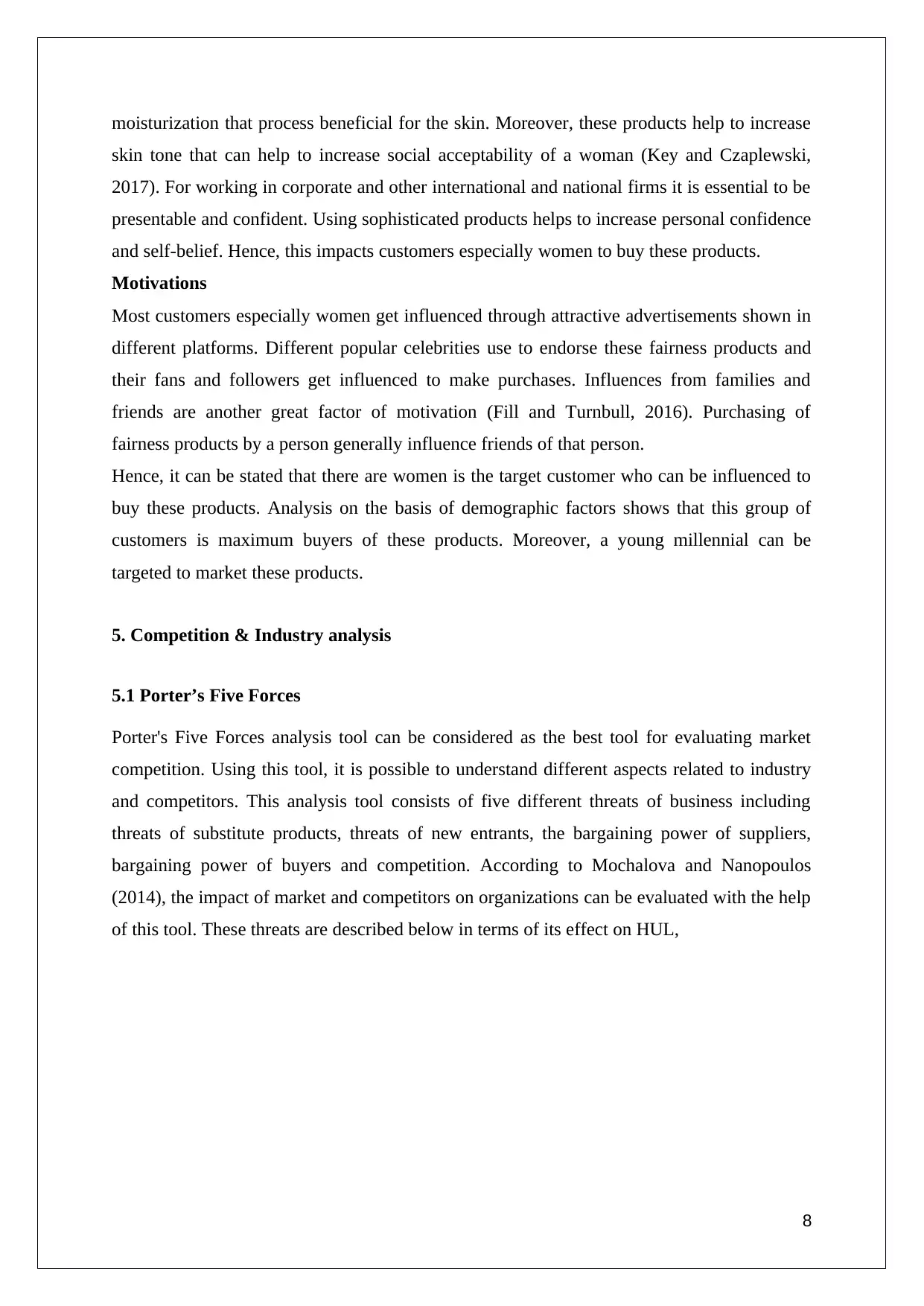
moisturization that process beneficial for the skin. Moreover, these products help to increase
skin tone that can help to increase social acceptability of a woman (Key and Czaplewski,
2017). For working in corporate and other international and national firms it is essential to be
presentable and confident. Using sophisticated products helps to increase personal confidence
and self-belief. Hence, this impacts customers especially women to buy these products.
Motivations
Most customers especially women get influenced through attractive advertisements shown in
different platforms. Different popular celebrities use to endorse these fairness products and
their fans and followers get influenced to make purchases. Influences from families and
friends are another great factor of motivation (Fill and Turnbull, 2016). Purchasing of
fairness products by a person generally influence friends of that person.
Hence, it can be stated that there are women is the target customer who can be influenced to
buy these products. Analysis on the basis of demographic factors shows that this group of
customers is maximum buyers of these products. Moreover, a young millennial can be
targeted to market these products.
5. Competition & Industry analysis
5.1 Porter’s Five Forces
Porter's Five Forces analysis tool can be considered as the best tool for evaluating market
competition. Using this tool, it is possible to understand different aspects related to industry
and competitors. This analysis tool consists of five different threats of business including
threats of substitute products, threats of new entrants, the bargaining power of suppliers,
bargaining power of buyers and competition. According to Mochalova and Nanopoulos
(2014), the impact of market and competitors on organizations can be evaluated with the help
of this tool. These threats are described below in terms of its effect on HUL,
8
skin tone that can help to increase social acceptability of a woman (Key and Czaplewski,
2017). For working in corporate and other international and national firms it is essential to be
presentable and confident. Using sophisticated products helps to increase personal confidence
and self-belief. Hence, this impacts customers especially women to buy these products.
Motivations
Most customers especially women get influenced through attractive advertisements shown in
different platforms. Different popular celebrities use to endorse these fairness products and
their fans and followers get influenced to make purchases. Influences from families and
friends are another great factor of motivation (Fill and Turnbull, 2016). Purchasing of
fairness products by a person generally influence friends of that person.
Hence, it can be stated that there are women is the target customer who can be influenced to
buy these products. Analysis on the basis of demographic factors shows that this group of
customers is maximum buyers of these products. Moreover, a young millennial can be
targeted to market these products.
5. Competition & Industry analysis
5.1 Porter’s Five Forces
Porter's Five Forces analysis tool can be considered as the best tool for evaluating market
competition. Using this tool, it is possible to understand different aspects related to industry
and competitors. This analysis tool consists of five different threats of business including
threats of substitute products, threats of new entrants, the bargaining power of suppliers,
bargaining power of buyers and competition. According to Mochalova and Nanopoulos
(2014), the impact of market and competitors on organizations can be evaluated with the help
of this tool. These threats are described below in terms of its effect on HUL,
8
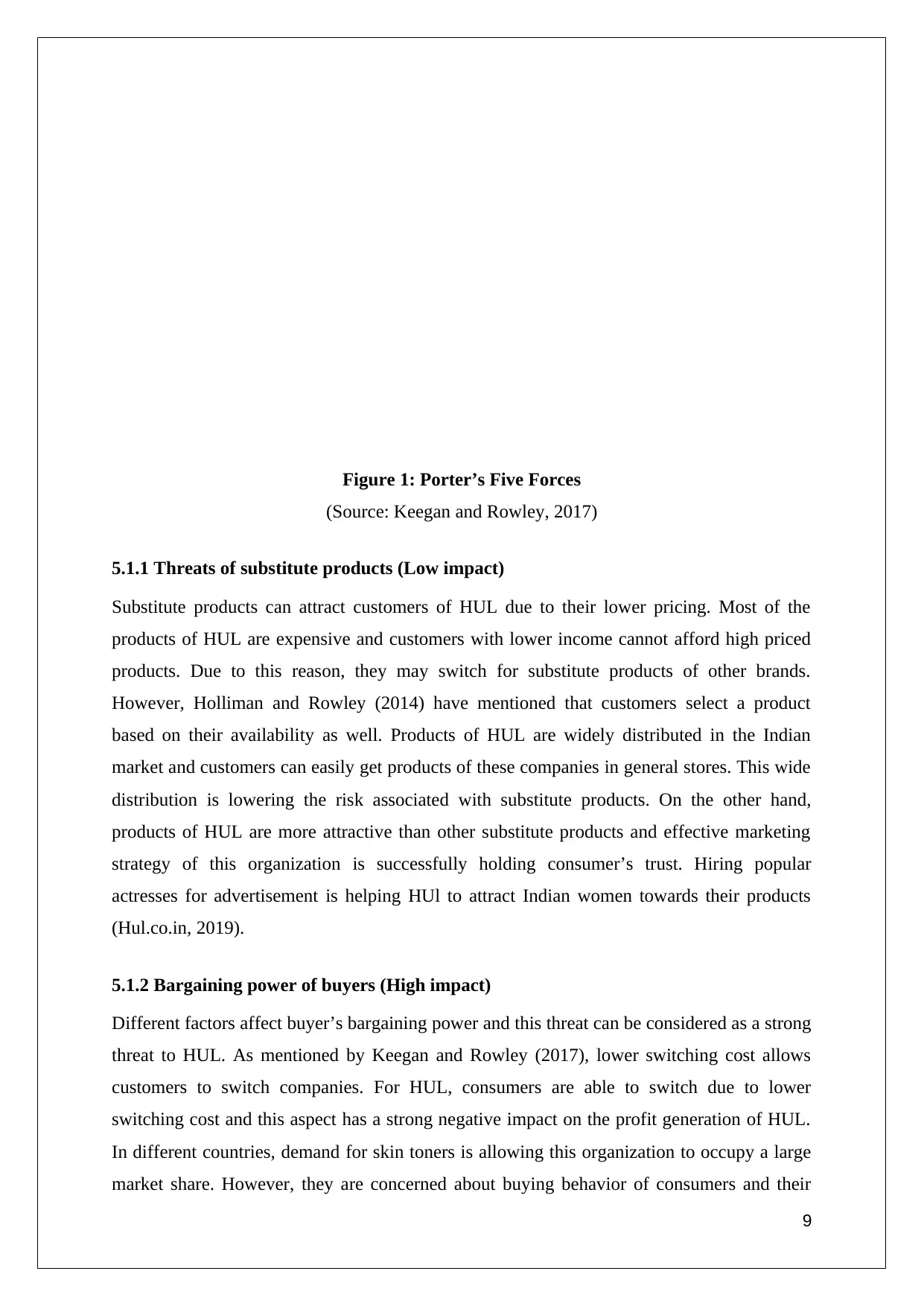
Figure 1: Porter’s Five Forces
(Source: Keegan and Rowley, 2017)
5.1.1 Threats of substitute products (Low impact)
Substitute products can attract customers of HUL due to their lower pricing. Most of the
products of HUL are expensive and customers with lower income cannot afford high priced
products. Due to this reason, they may switch for substitute products of other brands.
However, Holliman and Rowley (2014) have mentioned that customers select a product
based on their availability as well. Products of HUL are widely distributed in the Indian
market and customers can easily get products of these companies in general stores. This wide
distribution is lowering the risk associated with substitute products. On the other hand,
products of HUL are more attractive than other substitute products and effective marketing
strategy of this organization is successfully holding consumer’s trust. Hiring popular
actresses for advertisement is helping HUl to attract Indian women towards their products
(Hul.co.in, 2019).
5.1.2 Bargaining power of buyers (High impact)
Different factors affect buyer’s bargaining power and this threat can be considered as a strong
threat to HUL. As mentioned by Keegan and Rowley (2017), lower switching cost allows
customers to switch companies. For HUL, consumers are able to switch due to lower
switching cost and this aspect has a strong negative impact on the profit generation of HUL.
In different countries, demand for skin toners is allowing this organization to occupy a large
market share. However, they are concerned about buying behavior of consumers and their
9
(Source: Keegan and Rowley, 2017)
5.1.1 Threats of substitute products (Low impact)
Substitute products can attract customers of HUL due to their lower pricing. Most of the
products of HUL are expensive and customers with lower income cannot afford high priced
products. Due to this reason, they may switch for substitute products of other brands.
However, Holliman and Rowley (2014) have mentioned that customers select a product
based on their availability as well. Products of HUL are widely distributed in the Indian
market and customers can easily get products of these companies in general stores. This wide
distribution is lowering the risk associated with substitute products. On the other hand,
products of HUL are more attractive than other substitute products and effective marketing
strategy of this organization is successfully holding consumer’s trust. Hiring popular
actresses for advertisement is helping HUl to attract Indian women towards their products
(Hul.co.in, 2019).
5.1.2 Bargaining power of buyers (High impact)
Different factors affect buyer’s bargaining power and this threat can be considered as a strong
threat to HUL. As mentioned by Keegan and Rowley (2017), lower switching cost allows
customers to switch companies. For HUL, consumers are able to switch due to lower
switching cost and this aspect has a strong negative impact on the profit generation of HUL.
In different countries, demand for skin toners is allowing this organization to occupy a large
market share. However, they are concerned about buying behavior of consumers and their
9
⊘ This is a preview!⊘
Do you want full access?
Subscribe today to unlock all pages.

Trusted by 1+ million students worldwide
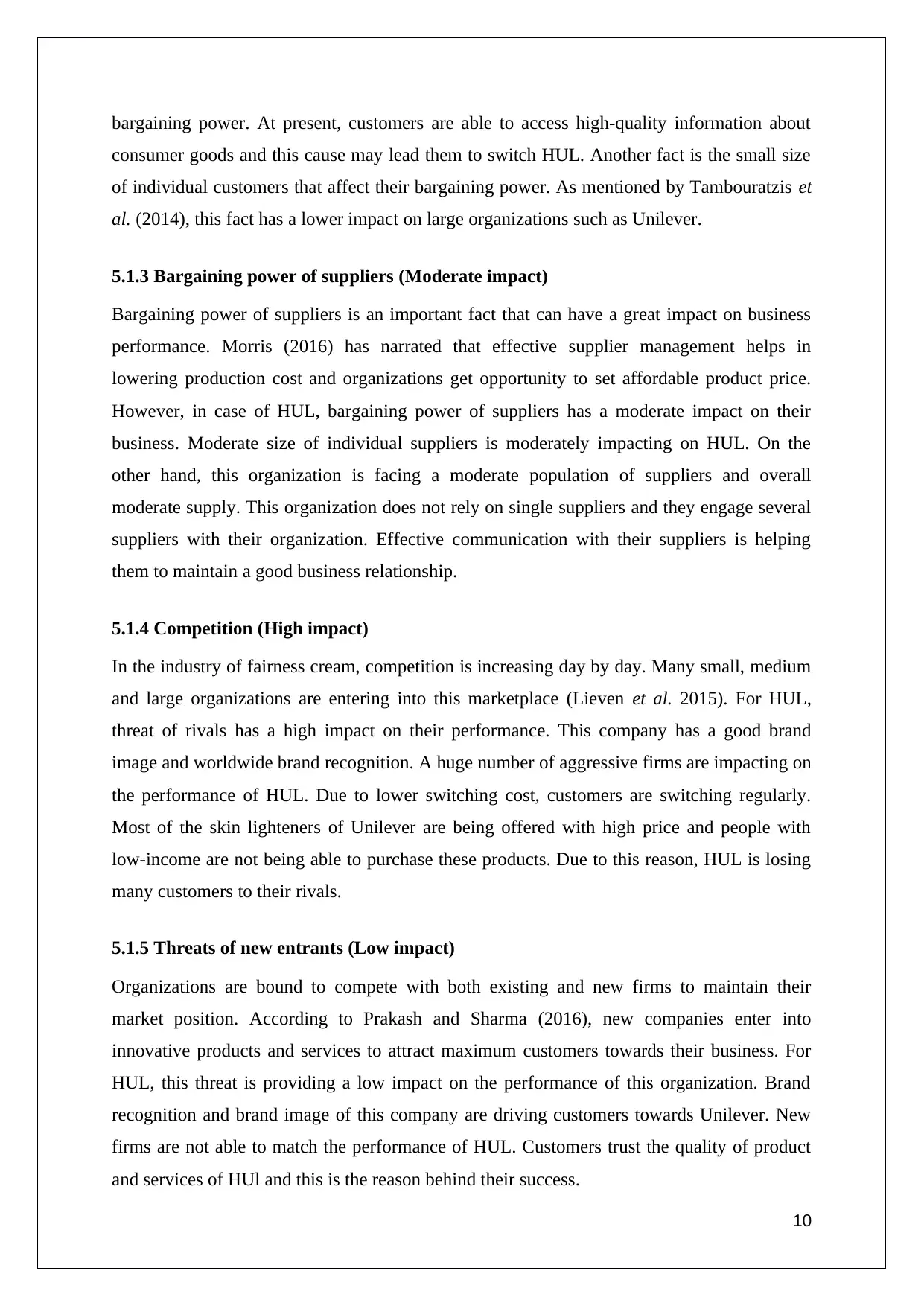
bargaining power. At present, customers are able to access high-quality information about
consumer goods and this cause may lead them to switch HUL. Another fact is the small size
of individual customers that affect their bargaining power. As mentioned by Tambouratzis et
al. (2014), this fact has a lower impact on large organizations such as Unilever.
5.1.3 Bargaining power of suppliers (Moderate impact)
Bargaining power of suppliers is an important fact that can have a great impact on business
performance. Morris (2016) has narrated that effective supplier management helps in
lowering production cost and organizations get opportunity to set affordable product price.
However, in case of HUL, bargaining power of suppliers has a moderate impact on their
business. Moderate size of individual suppliers is moderately impacting on HUL. On the
other hand, this organization is facing a moderate population of suppliers and overall
moderate supply. This organization does not rely on single suppliers and they engage several
suppliers with their organization. Effective communication with their suppliers is helping
them to maintain a good business relationship.
5.1.4 Competition (High impact)
In the industry of fairness cream, competition is increasing day by day. Many small, medium
and large organizations are entering into this marketplace (Lieven et al. 2015). For HUL,
threat of rivals has a high impact on their performance. This company has a good brand
image and worldwide brand recognition. A huge number of aggressive firms are impacting on
the performance of HUL. Due to lower switching cost, customers are switching regularly.
Most of the skin lighteners of Unilever are being offered with high price and people with
low-income are not being able to purchase these products. Due to this reason, HUL is losing
many customers to their rivals.
5.1.5 Threats of new entrants (Low impact)
Organizations are bound to compete with both existing and new firms to maintain their
market position. According to Prakash and Sharma (2016), new companies enter into
innovative products and services to attract maximum customers towards their business. For
HUL, this threat is providing a low impact on the performance of this organization. Brand
recognition and brand image of this company are driving customers towards Unilever. New
firms are not able to match the performance of HUL. Customers trust the quality of product
and services of HUl and this is the reason behind their success.
10
consumer goods and this cause may lead them to switch HUL. Another fact is the small size
of individual customers that affect their bargaining power. As mentioned by Tambouratzis et
al. (2014), this fact has a lower impact on large organizations such as Unilever.
5.1.3 Bargaining power of suppliers (Moderate impact)
Bargaining power of suppliers is an important fact that can have a great impact on business
performance. Morris (2016) has narrated that effective supplier management helps in
lowering production cost and organizations get opportunity to set affordable product price.
However, in case of HUL, bargaining power of suppliers has a moderate impact on their
business. Moderate size of individual suppliers is moderately impacting on HUL. On the
other hand, this organization is facing a moderate population of suppliers and overall
moderate supply. This organization does not rely on single suppliers and they engage several
suppliers with their organization. Effective communication with their suppliers is helping
them to maintain a good business relationship.
5.1.4 Competition (High impact)
In the industry of fairness cream, competition is increasing day by day. Many small, medium
and large organizations are entering into this marketplace (Lieven et al. 2015). For HUL,
threat of rivals has a high impact on their performance. This company has a good brand
image and worldwide brand recognition. A huge number of aggressive firms are impacting on
the performance of HUL. Due to lower switching cost, customers are switching regularly.
Most of the skin lighteners of Unilever are being offered with high price and people with
low-income are not being able to purchase these products. Due to this reason, HUL is losing
many customers to their rivals.
5.1.5 Threats of new entrants (Low impact)
Organizations are bound to compete with both existing and new firms to maintain their
market position. According to Prakash and Sharma (2016), new companies enter into
innovative products and services to attract maximum customers towards their business. For
HUL, this threat is providing a low impact on the performance of this organization. Brand
recognition and brand image of this company are driving customers towards Unilever. New
firms are not able to match the performance of HUL. Customers trust the quality of product
and services of HUl and this is the reason behind their success.
10
Paraphrase This Document
Need a fresh take? Get an instant paraphrase of this document with our AI Paraphraser
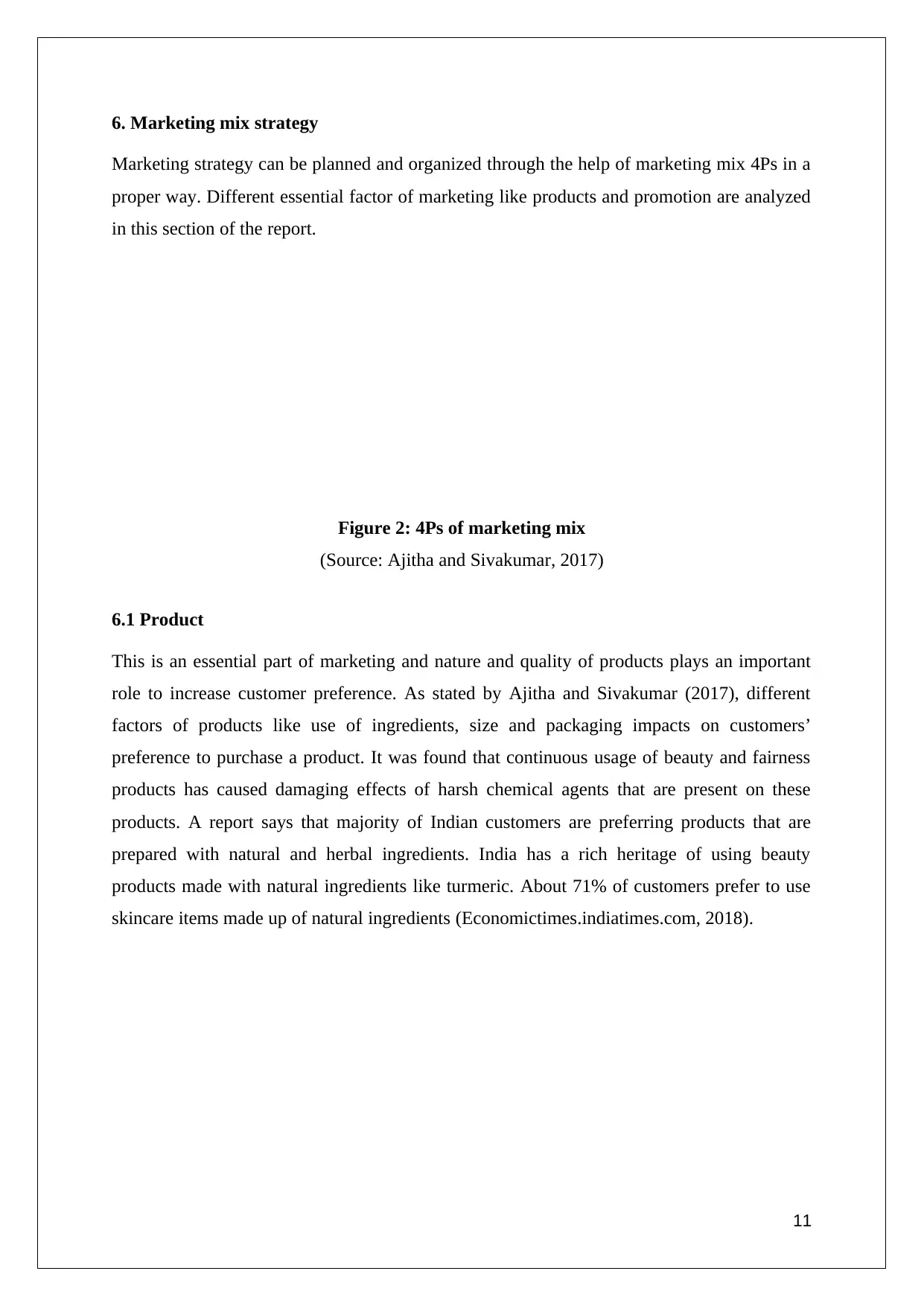
6. Marketing mix strategy
Marketing strategy can be planned and organized through the help of marketing mix 4Ps in a
proper way. Different essential factor of marketing like products and promotion are analyzed
in this section of the report.
Figure 2: 4Ps of marketing mix
(Source: Ajitha and Sivakumar, 2017)
6.1 Product
This is an essential part of marketing and nature and quality of products plays an important
role to increase customer preference. As stated by Ajitha and Sivakumar (2017), different
factors of products like use of ingredients, size and packaging impacts on customers’
preference to purchase a product. It was found that continuous usage of beauty and fairness
products has caused damaging effects of harsh chemical agents that are present on these
products. A report says that majority of Indian customers are preferring products that are
prepared with natural and herbal ingredients. India has a rich heritage of using beauty
products made with natural ingredients like turmeric. About 71% of customers prefer to use
skincare items made up of natural ingredients (Economictimes.indiatimes.com, 2018).
11
4PsofmarketingmixProductPricePlacePromotion
Marketing strategy can be planned and organized through the help of marketing mix 4Ps in a
proper way. Different essential factor of marketing like products and promotion are analyzed
in this section of the report.
Figure 2: 4Ps of marketing mix
(Source: Ajitha and Sivakumar, 2017)
6.1 Product
This is an essential part of marketing and nature and quality of products plays an important
role to increase customer preference. As stated by Ajitha and Sivakumar (2017), different
factors of products like use of ingredients, size and packaging impacts on customers’
preference to purchase a product. It was found that continuous usage of beauty and fairness
products has caused damaging effects of harsh chemical agents that are present on these
products. A report says that majority of Indian customers are preferring products that are
prepared with natural and herbal ingredients. India has a rich heritage of using beauty
products made with natural ingredients like turmeric. About 71% of customers prefer to use
skincare items made up of natural ingredients (Economictimes.indiatimes.com, 2018).
11
4PsofmarketingmixProductPricePlacePromotion
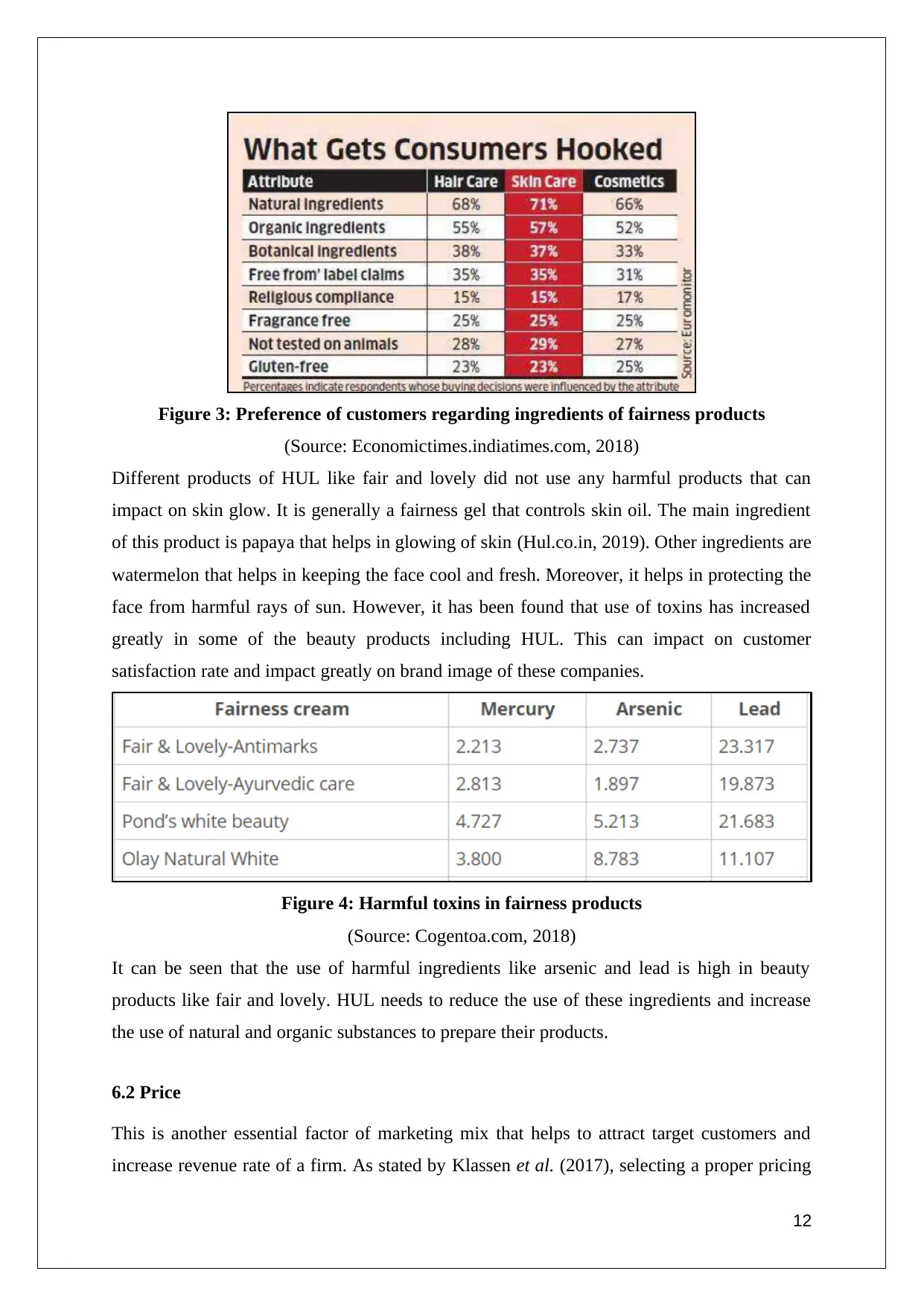
Figure 3: Preference of customers regarding ingredients of fairness products
(Source: Economictimes.indiatimes.com, 2018)
Different products of HUL like fair and lovely did not use any harmful products that can
impact on skin glow. It is generally a fairness gel that controls skin oil. The main ingredient
of this product is papaya that helps in glowing of skin (Hul.co.in, 2019). Other ingredients are
watermelon that helps in keeping the face cool and fresh. Moreover, it helps in protecting the
face from harmful rays of sun. However, it has been found that use of toxins has increased
greatly in some of the beauty products including HUL. This can impact on customer
satisfaction rate and impact greatly on brand image of these companies.
Figure 4: Harmful toxins in fairness products
(Source: Cogentoa.com, 2018)
It can be seen that the use of harmful ingredients like arsenic and lead is high in beauty
products like fair and lovely. HUL needs to reduce the use of these ingredients and increase
the use of natural and organic substances to prepare their products.
6.2 Price
This is another essential factor of marketing mix that helps to attract target customers and
increase revenue rate of a firm. As stated by Klassen et al. (2017), selecting a proper pricing
12
(Source: Economictimes.indiatimes.com, 2018)
Different products of HUL like fair and lovely did not use any harmful products that can
impact on skin glow. It is generally a fairness gel that controls skin oil. The main ingredient
of this product is papaya that helps in glowing of skin (Hul.co.in, 2019). Other ingredients are
watermelon that helps in keeping the face cool and fresh. Moreover, it helps in protecting the
face from harmful rays of sun. However, it has been found that use of toxins has increased
greatly in some of the beauty products including HUL. This can impact on customer
satisfaction rate and impact greatly on brand image of these companies.
Figure 4: Harmful toxins in fairness products
(Source: Cogentoa.com, 2018)
It can be seen that the use of harmful ingredients like arsenic and lead is high in beauty
products like fair and lovely. HUL needs to reduce the use of these ingredients and increase
the use of natural and organic substances to prepare their products.
6.2 Price
This is another essential factor of marketing mix that helps to attract target customers and
increase revenue rate of a firm. As stated by Klassen et al. (2017), selecting a proper pricing
12
⊘ This is a preview!⊘
Do you want full access?
Subscribe today to unlock all pages.

Trusted by 1+ million students worldwide
1 out of 23
Related Documents
Your All-in-One AI-Powered Toolkit for Academic Success.
+13062052269
info@desklib.com
Available 24*7 on WhatsApp / Email
![[object Object]](/_next/static/media/star-bottom.7253800d.svg)
Unlock your academic potential
Copyright © 2020–2025 A2Z Services. All Rights Reserved. Developed and managed by ZUCOL.





